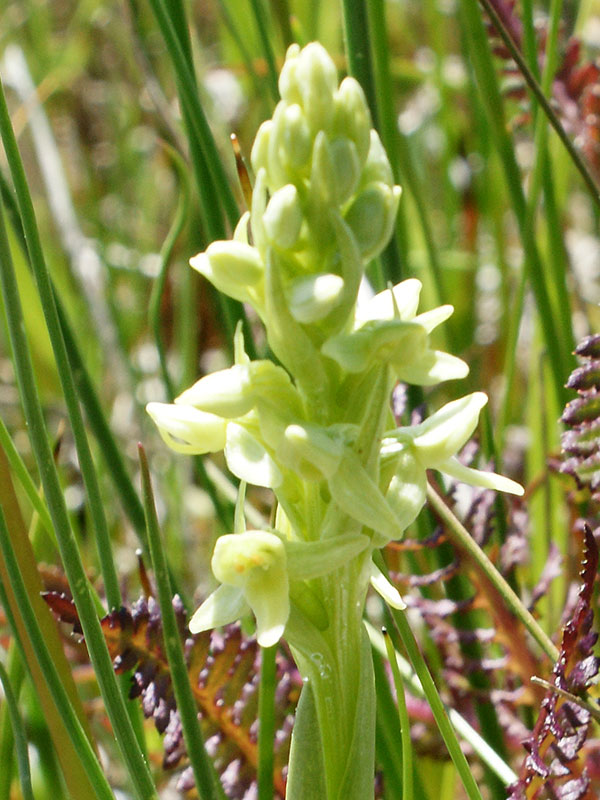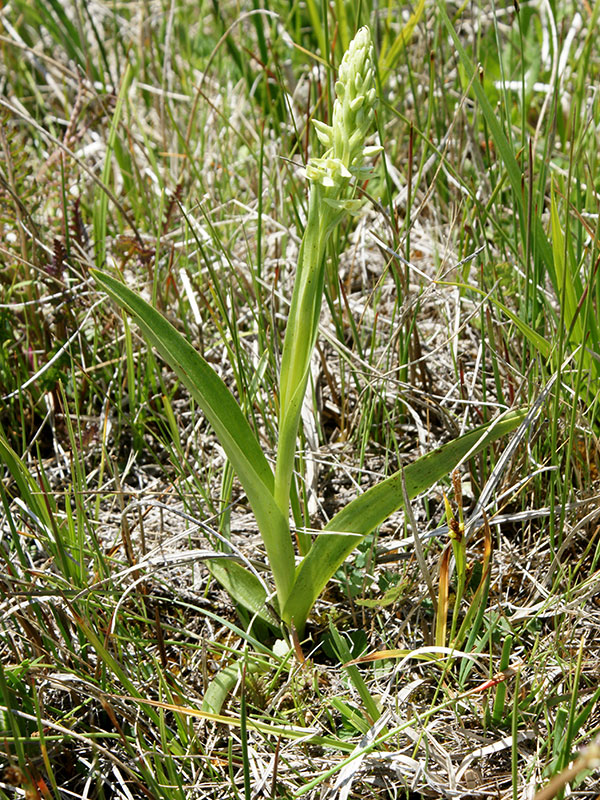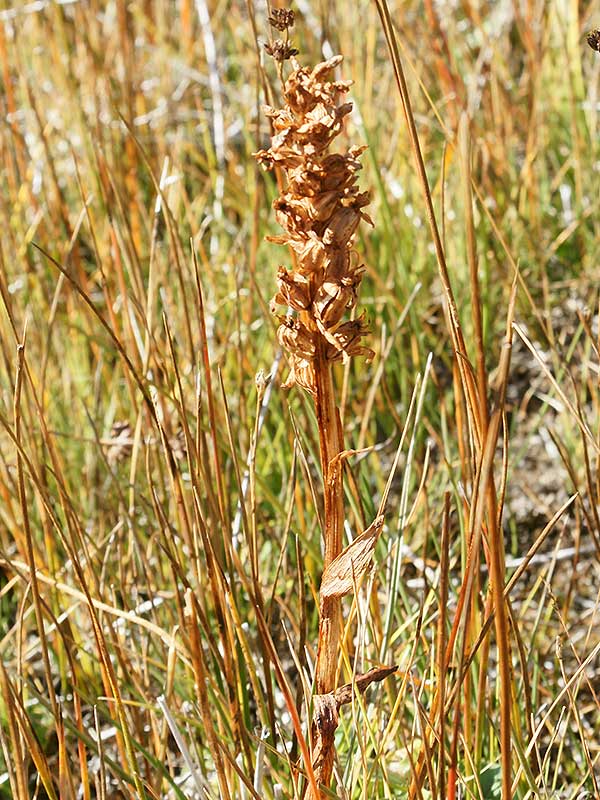Platanthera huronensis / green bog orchid
- usually in bogs, fens, wetlands
- up to two feet tall, but often shorter
- thick, nearly vertical leaves with parallel veins (i.e. grass-like)
- up to 75 very small flowers per stem (raceme)
- flowers -light green to greenish-white; two petals, three sepals, a lip and club-like spur
- lip is not pouch-like
Also known as: Lake Huron green bog orchid, tall green bog orchid, northern tall bog orchid
Synonyms: Platanthera hyperborea, Limnorchis huronensis, Habenaria huronensis, H. hyperborea
See also: Platanthera dilatata / white bog orchid; Platanthera unalascensis / slender-spire orchid
The green bog orchid, as its name suggests, is found in bogs and fens. But it is apparently also found on roadsides and rocky slopes so the name is a bit confusing. Both common and Latin names also suggest that it is found around Lake Huron. It may well be, but it is certainly not limited to there.
P. huronensis is a perennial. It probably propagates mostly by seed, but the fleshy, fibrous root system may occasionally develop clonal offsets. In any case, at most sites, where there is one there are almost always more.
At first they may be hard to see because they blend in with the overall mass of green in wet areas, but once you do see them, you’ll notice that they have large mostly vertical leaves from which the stout flowering stalk arises. The tiny flowers are arranged in a whorl around the stem. The inflorescence is a raceme, densely packed, up to 75 flowers. In some cases, it can get a couple feet tall. Unlike some other similar looking orchids, this one has a sweet aroma, although it may sometimes be quite faint.
In each flower, two petals, three sepals and lip are light green to greenish white. There is a spur, not really visible in any of my photos, that is also greenish-white. It is about as long as the lip, and “club-like”. The lip, shown well in the photo gallery, is lance shaped, broadest at the base and narrowing to the tip – it is not pouch-like like some orchids. The lip is a bit lighter in color than the other petals/sepals. And, the labella are free of the sepals on the side and the anther sacs (reddish or yellowish spots in these photos) are visible.
Interesting bits – First of all, this orchid is probably pollinated by small insects, including mosquitos. That is not, to me, sufficient justification for their existence, but I don’t get to choose.
Second, like many other plants on this site, the systematics of P. huronensis have been problematic. It has, for example, in the past been in the genera Habenaria and Limnorchis. As a Plantanthera, there is at least one very similar species that may or may not be the same, that occurs in Idaho – P. aquilonis. At least the also-very-similar P. hyperborea is now thought to be limited to the Alaska, BC and possibly Washington coasts. The source of the confusion probably lies in the origin of this species – it is thought to have descended from crosses between Platanthera aquilonis and P. dilatata.
According to one study, the morphological intermediacy of this species indicates that it may well be an allopolyploid derivative of the other two. Plants sampled in the west were more similar to P. dilatata while eastern ones were identical to P. aquilonis in their chloroplast DNA patterns. Collectively, those differences pointed to multiple independent origins and complex evolutionary histories in todays populations, so of course it is confusing.
Acknowledgement – I would like to thank John Gange for his patience with me and for his assistance in properly identifying this species.
| Color | |
|---|---|
| Family | |
| Blossom size | |
| Inflorescence size | |
| Inflorescence type | |
| When? | |
| Where? |





